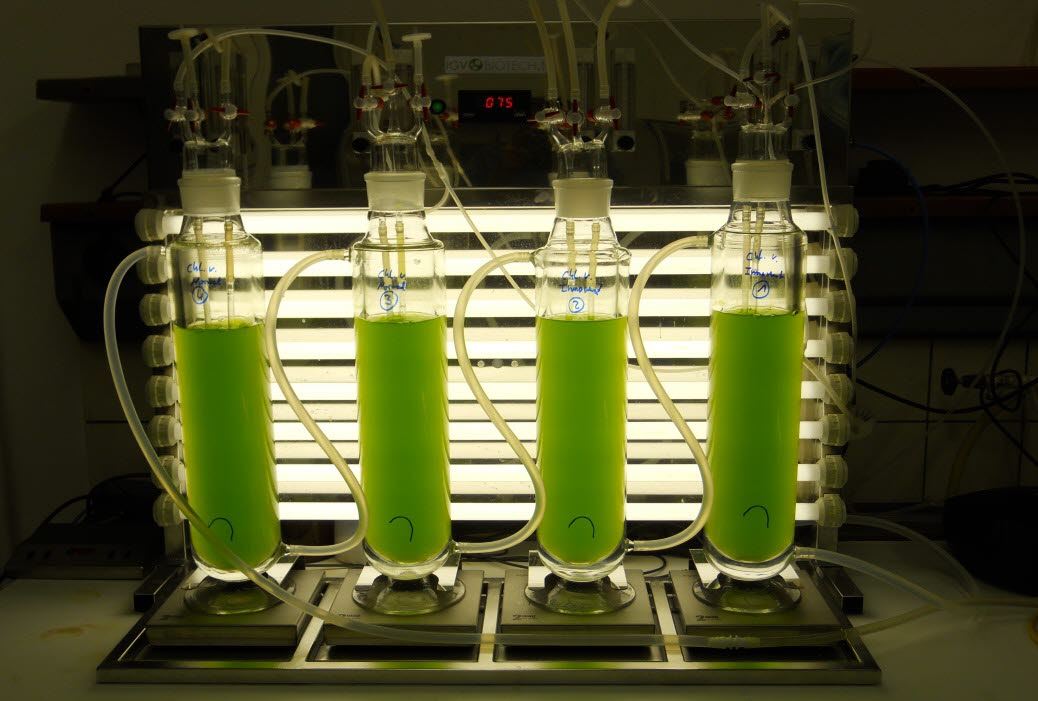At SINTEF we work on topics related to microalgae production and cultivation technology in different scales from stem cultures in the laboratory (where we study the quality of different algae) and up to several hundred litres to provide feed for copepods and fish larvae. We focus on phototrophic cultivation and at present we work with different species of microalgae that are suitable as feed organisms. We also work on developing lipid rich algae as a source of EPA and DHA in fish and animal feed. It is also possible to apply different biotechnological tools to improve some selected quality before proceeding to biomass production.
There is a significant research focus on biofuels and much of the knowledge can be transferred to other areas. There is one challenge that is common to all areas, and that is the bottle neck that occurs on production level and how to produce enough biomass. To establish stable and economically viable production is challenging, but we believe that there are solutions to this in the near future. One of the major challenges that are being addressed by research programs and politicians is the global need for sustainable food production. In Norway we have a strong economy based on oil exploitation, but in the future we also have to rely on other economic sources and one example that should be prioritized is the bioeconomy. Bioeconomy includes sustainable production and conversion of biomass to e.g. food, health or energy.

